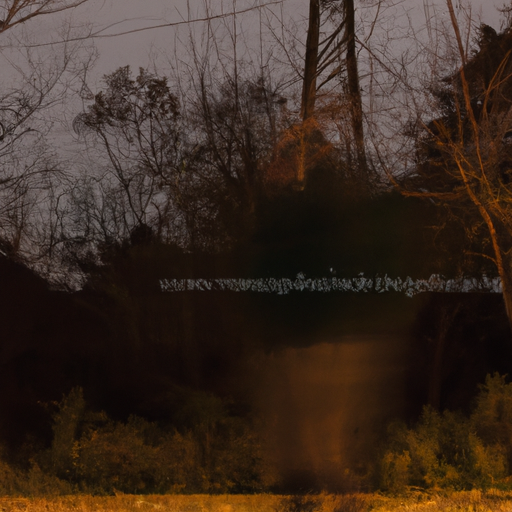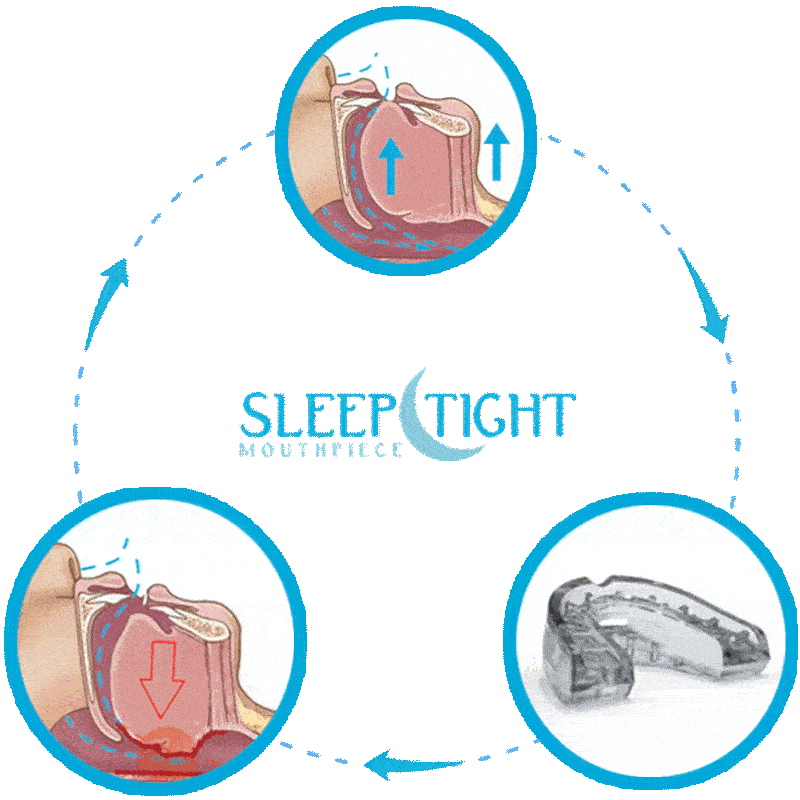Have you ever woken up in the middle of the night, finding yourself walking around the house? It’s as if you’re on autopilot, with no awareness of your actions. This strange phenomenon is called sleepwalking, and it can be quite puzzling. But why exactly do people sleepwalk, and more importantly, is it dangerous? In this article, we’ll delve into the fascinating world of sleepwalking, exploring its causes and potential risks so you can better understand this mysterious behavior.
Sleepwalking, also known as somnambulism, occurs during the non-REM stages of sleep, usually within the first few hours of falling asleep. It’s more common in children but can affect adults as well. Although it may seem like a bizarre occurrence, sleepwalking is actually quite a common phenomenon, with an estimated 10-15% of individuals experiencing at least one episode in their lifetime. While the exact causes of sleepwalking are not fully understood, it is believed to be linked to various factors such as genetics, sleep deprivation, irregular sleep schedules, stress, and certain medications. So, if you’ve ever found yourself wandering around the house while fast asleep, don’t worry – you’re not alone! In the rest of this article, we’ll delve deeper into the potential dangers of sleepwalking and how to manage this condition effectively. Stay tuned!

Understanding Sleepwalking
Sleepwalking, also known as somnambulism, is a parasomnia disorder characterized by complex behaviors performed during sleep. It is a fascinating phenomenon that has intrigued scientists and researchers for centuries. In this article, we will explore the causes, symptoms, potential risks, and treatment options for sleepwalking.
What is sleepwalking?
Sleepwalking is a sleep disorder that occurs during the non-REM (rapid eye movement) stage of sleep. It involves a series of complex behaviors performed while the individual is still asleep. Sleepwalkers may engage in activities such as walking, talking, eating, and even driving, often without any recollection of these events upon waking up.
Prevalence of sleepwalking
Sleepwalking is more common in children than in adults, with prevalence rates ranging from 1-15% in children and 1-4% in adults. However, it can occur at any age. Sleepwalking episodes typically last for a few minutes but can sometimes persist for up to an hour.
Stages of sleepwalking
Sleepwalking occurs during the deep stages of sleep, particularly during the first or second non-REM sleep cycle. These stages are characterized by slow brain waves, known as delta waves. Sleepwalking episodes usually happen within the first few hours of falling asleep when the sleep is deepest.
Causes of Sleepwalking
The exact cause of sleepwalking is still not fully understood, but several factors can contribute to its development. These factors include genetic predisposition, environmental triggers, medications and substances, and underlying sleep disorders.
Genetic factors
Research suggests that sleepwalking may have a genetic component. If one or both parents are sleepwalkers, the chances of their children experiencing sleepwalking increase. However, specific genes responsible for sleepwalking have not been identified yet.
Environmental triggers
Certain environmental factors can trigger sleepwalking episodes in susceptible individuals. These triggers can include sleep deprivation, erratic sleep schedules, alcohol consumption, fever, stress, and sleep disruptions.
Medications and substances
Certain medications and substances can disrupt the normal sleep cycle and increase the likelihood of sleepwalking. This includes sedatives, hypnotics, antidepressants, and stimulants. Alcohol consumption can also contribute to sleepwalking episodes.
Sleep disorders
Underlying sleep disorders such as sleep apnea and restless leg syndrome have been associated with sleepwalking. These disorders can disrupt the quality of sleep and increase the chances of sleepwalking episodes.
Symptoms and Behaviors
Sleepwalking is characterized by various symptoms and behaviors that can vary in intensity and frequency from person to person.
Walking or moving during sleep
The most obvious symptom of sleepwalking is the act of walking or moving around while still asleep. Sleepwalkers often walk clumsily and may appear confused or disoriented. It is essential to create a safe sleep environment to prevent injuries that may occur during sleepwalking episodes.
Engaging in complex activities
Sleepwalkers can perform complex activities during their episodes. This can include actions like dressing themselves, cooking, and even driving. The actions are usually automatic and lack a clear purpose.
Limited awareness
Sleepwalkers typically have limited awareness of their surroundings and may have no recollection of their activities upon waking up. Their eyes may be open, but they are not truly conscious of what is happening.
Tendency to return to bed
Despite their complex behaviors, sleepwalkers often have a tendency to return to bed on their own. They usually return to a deep sleep state and wake up the next morning with little or no memory of their sleepwalking episode.

Potential Risks and Dangers
Sleepwalking can pose several risks to both the sleepwalker and others in their vicinity.
Physical injuries and accidents
Due to the disoriented state and lack of awareness during sleepwalking episodes, sleepwalkers are at risk of physical injuries and accidents. They may trip, fall, or encounter objects in their path, leading to bruises, fractures, or more severe injuries.
Sleep disruption for the sleepwalker and others
The sleep disruptions caused by sleepwalking can lead to inadequate rest for the sleepwalker and their bed partner or family members. It can result in daytime fatigue, decreased cognitive function, and poor overall well-being for all individuals involved.
Emotional distress
Sleepwalking can cause emotional distress for the sleepwalker and their loved ones. Sleepwalkers may feel embarrassed or ashamed of their behavior, while family members may worry about their safety.
Safety precautions
To mitigate the potential risks and dangers associated with sleepwalking, it is crucial to implement safety precautions. This can include securing windows and doors, removing obstacles from the sleepwalker’s path, and using sleepwalking alarms or devices. Creating a safe sleep environment is essential for the well-being of the sleepwalker.
Diagnosis and Evaluation
Diagnosing sleepwalking involves a comprehensive evaluation that includes a medical history, physical examination, and, in some cases, additional sleep studies.
Medical history and physical examination
A healthcare professional will review the sleepwalker’s medical history, including any family history of sleep disorders or sleepwalking. A physical examination may also be conducted to identify any underlying medical conditions that may be contributing to the sleepwalking episodes.
Sleep studies and monitoring
In some cases, a sleep study, such as a polysomnography, may be recommended to monitor brain activity, heart rate, and other physiological parameters during sleep. This can help identify any underlying sleep disorders and assess the severity of the sleepwalking episodes.
Differential diagnosis
It is essential to differentiate sleepwalking from other sleep disorders or nocturnal behaviors. Disorders such as sleep terrors, sleep-related eating disorder, and REM sleep behavior disorder can present with similar symptoms and behaviors. A healthcare professional can help make an accurate diagnosis.
Treatment Options
Treatment for sleepwalking primarily focuses on managing the underlying causes and reducing the frequency and intensity of sleepwalking episodes.
Improving sleep hygiene
Establishing a regular sleep schedule, creating a calm and comfortable sleep environment, and practicing good sleep hygiene habits can help improve sleep quality and reduce the likelihood of sleepwalking.
Reducing stress and anxiety
Stress and anxiety can exacerbate sleepwalking episodes. Effective stress management techniques, such as relaxation exercises, therapy, and lifestyle changes, can help reduce the frequency and intensity of sleepwalking.
Medications
In some cases, medications may be prescribed to treat sleepwalking. These may include medications that suppress rapid eye movement sleep or benzodiazepines that promote deep sleep and reduce arousal levels during sleep.
Therapeutic interventions
Additional therapeutic interventions, such as cognitive-behavioral therapy, can also be beneficial in managing sleepwalking. These therapies aim to identify and modify any underlying psychological factors that may contribute to sleepwalking episodes.
Managing Sleepwalking
Apart from medical treatment, several strategies can help manage sleepwalking and reduce associated risks.
Creating a safe sleep environment
To prevent injuries during sleepwalking episodes, it is crucial to remove obstacles from the sleepwalker’s surroundings. Securing windows and doors can also help prevent potential accidents.
Sleepwalking alarms and devices
Sleepwalking alarms can be used to alert the sleepwalker or their caregivers when an episode occurs. These alarms can be worn on the wrist or ankle and trigger an auditory, tactile, or vibratory stimulus to wake the sleepwalker.
Monitoring and supervision
Monitoring and supervising sleepwalkers can help prevent accidents and injuries during episodes. A responsible adult should ensure the sleepwalker’s safety during the night and guide them back to bed if necessary.
Establishing a consistent sleep schedule
Maintaining a consistent sleep schedule can help regulate the sleep cycle, reduce sleep disturbances, and potentially minimize the frequency of sleepwalking episodes.
Effects on Daily Life
Sleepwalking can have various effects on an individual’s daily life and overall well-being.
Impact on quality of sleep
Sleepwalking episodes can disrupt the sleep cycle and result in poor sleep quality for the sleepwalker and those around them. This can lead to daytime fatigue, decreased concentration, and impaired cognitive function.
Interference with relationships
Sleepwalking can sometimes strain relationships, as sleepwalkers may feel embarrassed or ashamed of their behavior, and their loved ones may worry about their safety. Open communication and understanding can help minimize the impact on relationships.
Challenges in daily activities
The fatigue and lack of quality sleep caused by sleepwalking can make daily activities more challenging. Sleepwalkers may experience difficulties in concentrating, completing tasks, and managing their emotions.
Psychological effects
Sleepwalking can have psychological effects on sleepwalkers, such as anxiety or depression. These effects may be due to the embarrassment associated with sleepwalking or the fear of potential accidents during episodes.
When to Seek Medical Help
While occasional sleepwalking episodes may not require immediate medical attention, certain factors may indicate a need for consultation with a healthcare professional.
Frequency and severity of sleepwalking episodes
If sleepwalking episodes occur frequently, persist into adulthood, or result in injuries or accidents, medical evaluation is recommended. A healthcare professional can provide proper diagnosis, treatment, and guidance.
Associated health concerns
If sleepwalking is accompanied by other symptoms such as daytime sleepiness, memory problems, or changes in behavior, a medical evaluation is essential to rule out underlying sleep disorders or health conditions.
Distress or impairment
If sleepwalking causes significant distress, embarrassment, or impairment in daily functioning, it is important to seek medical help. A healthcare professional can help manage these symptoms and improve overall well-being.
Conclusion
Sleepwalking is a complex sleep disorder that can be both fascinating and potentially dangerous. Understanding the causes and managing the condition can significantly improve the quality of life for sleepwalkers. By implementing safety precautions, seeking medical help when necessary, and adopting healthy sleep habits, individuals can mitigate the risks and manage the impact of sleepwalking on their daily lives. Remember, you are not alone, and with the right support and guidance, sleepwalking can be effectively managed.



